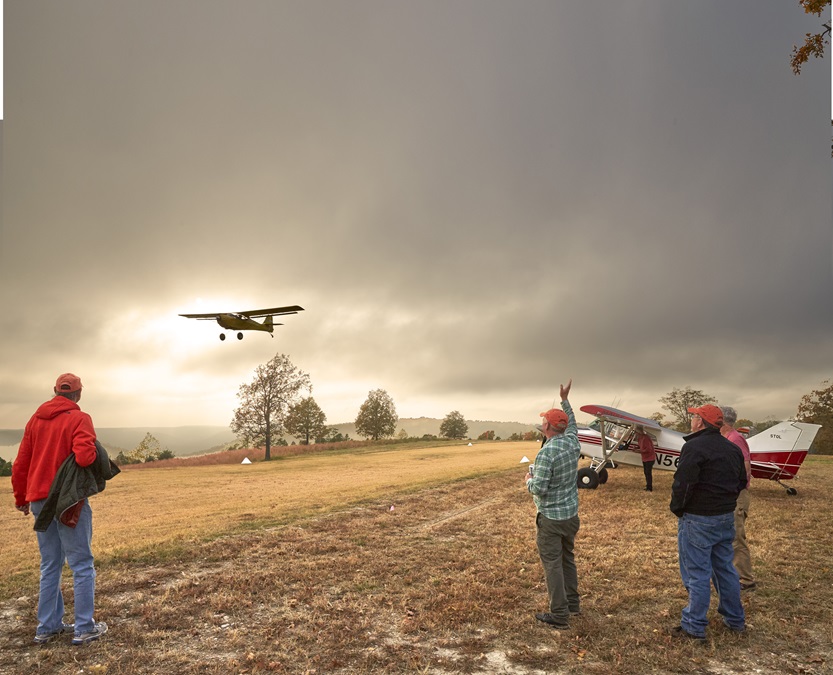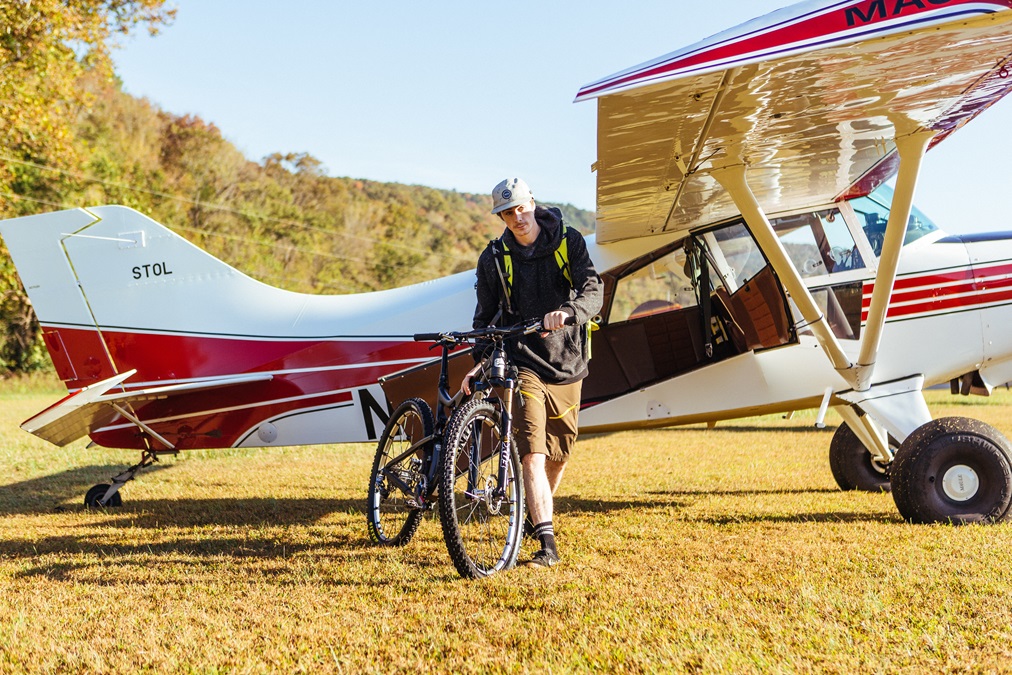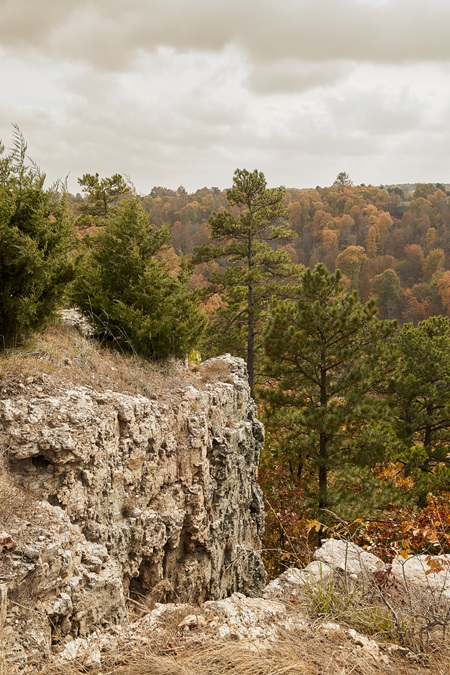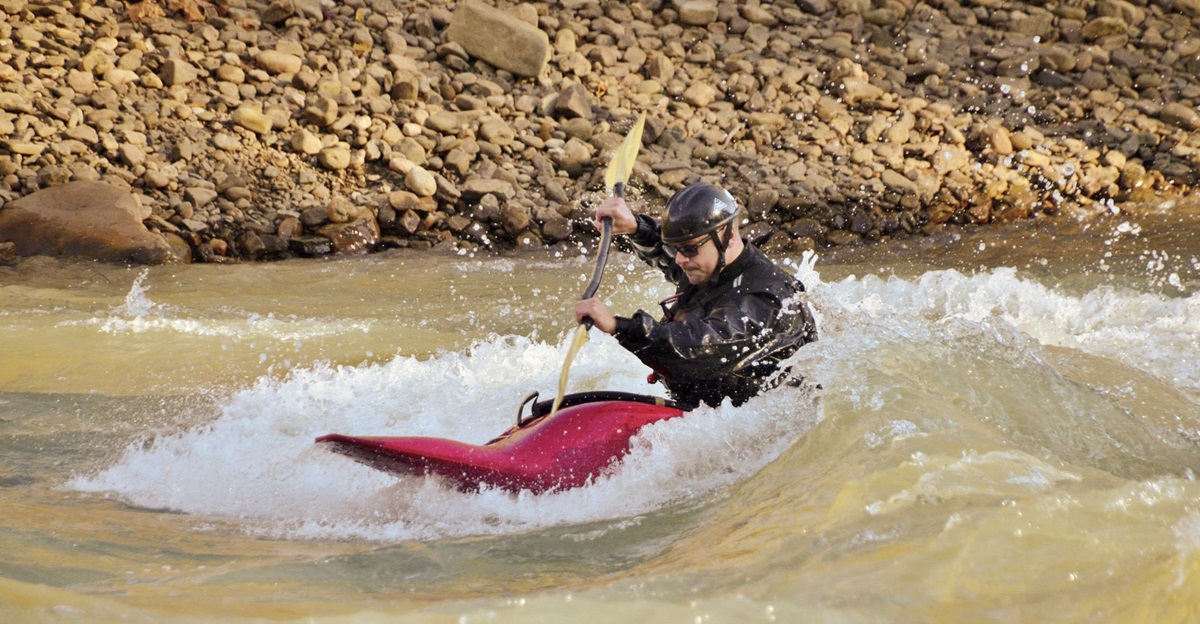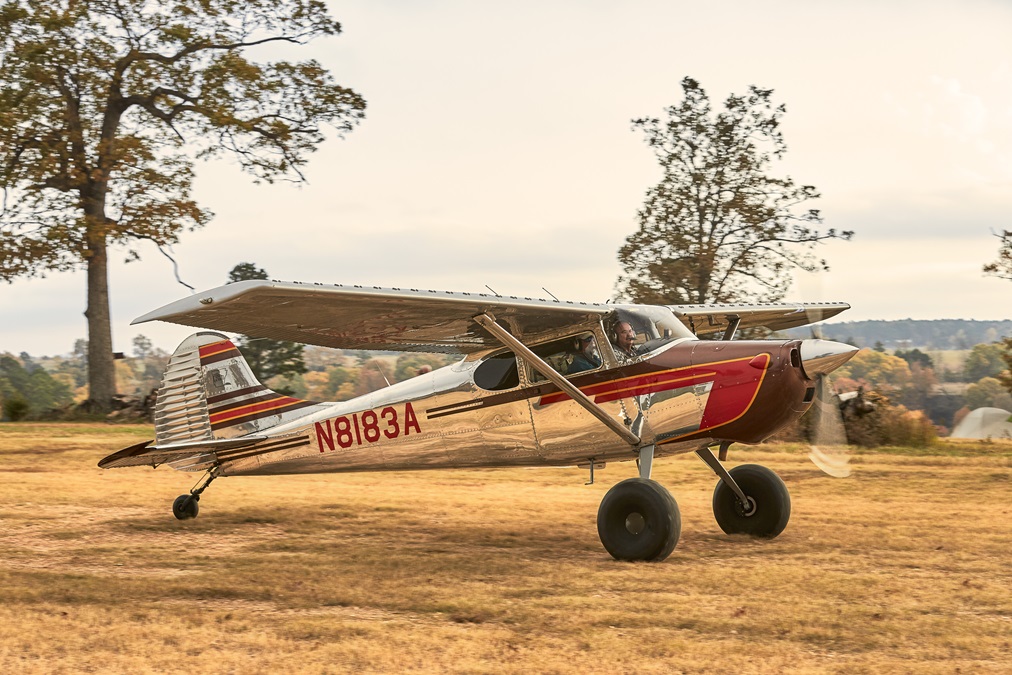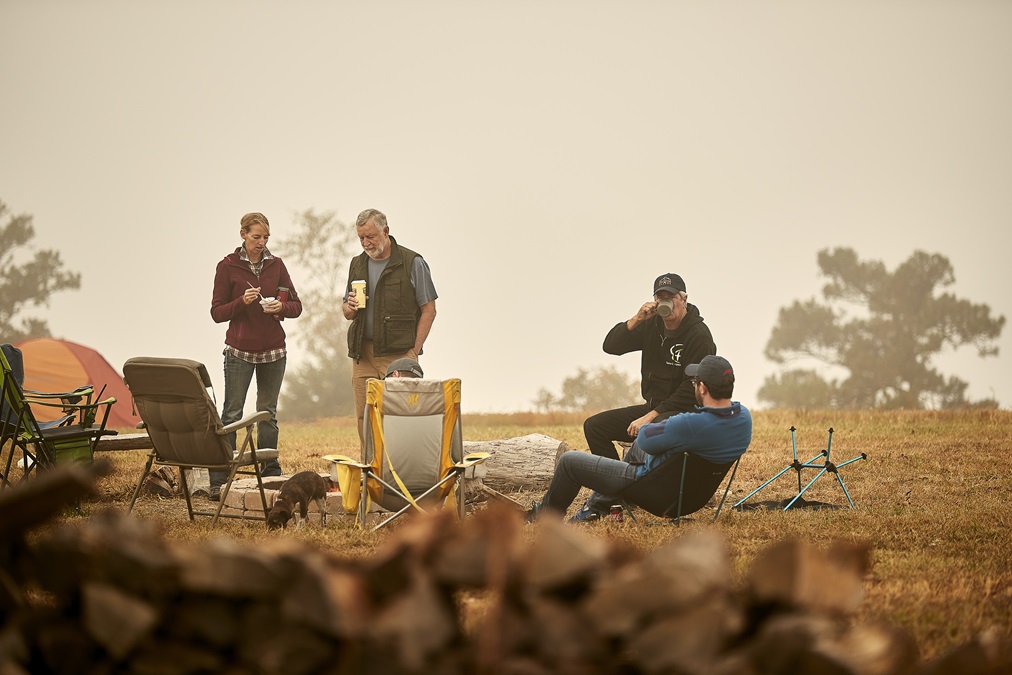Wings and wheels
Building an aviation ecosystem in bike country
“It’s a real jewel,” said David Powell, owner of Summit Aviation in Bentonville, Arkansas, who’s flying to the airstrip, which opened to the public in 2016, in his highly modified Cessna 170. “Trigger Gap is already well-known in the backcountry flying community. It draws pilots from all over the United States, and things are only getting started.”
The airstrip is 3,000 feet long and 75 feet wide—gigantic by backcountry standards. But landing there isn’t as easy as it sounds. A gusty crosswind is blowing from the south, and a bald eagle is riding the ridge lift on what would be a left downwind for the west-facing runway.
There are two windsocks at Trigger Gap, one at each end of the field—and today their indications are in direct conflict. One favors landing to the east, the other to the west. Powell decides to land east, a move that requires clearing a line of tall trees on the approach end, then slipping down to the surface of the hilltop runway. Powell touches down softly on spongy, 29-inch tires, and then pulls off near midfield where six other airplanes are tied down, their occupants pitching tents for a night under the wings of their assorted Cessnas, Maules, and a Kitfox.
“Idaho has Johnson Creek,” Powell said of the iconic airstrip in the vast Frank Church—River of No Return Wilderness Area. “We’ve got Trigger Gap—and we couldn’t be happier about it.”
Mountain bike motivation
The extensive network of mountain-bike trails that makes northwestern Arkansas a mecca for that sport may seem totally unrelated to backcountry flying—but it’s not. Oz Trails (www.oztrailsnwa.com) was formed about five years ago to link formerly unaffiliated riding trails across Northwest Arkansas, many of them on public lands, and create a web that reaches from a hub in downtown Bentonville to surrounding states. The result is a 208-mile trail network that is maintained by public and private groups, and a massive increase in mountain bike activity throughout the region. There has been an influx of new bike-related businesses, national and international competitions and gatherings, and a city that’s gained a new identity as a center of that vibrant sport.
Backcountry pilots have taken notice, and they’re making the region a haven for recreational flying with a growing network of backcountry airstrips. And some of the grass and gravel runways tie into existing trail and river networks.
“Oz Trails took a loose patchwork of mountain biking trails, gave it an identity, and showed people what an incredible place this is for that sport,” said Powell. “We’re doing something very similar with backcountry flying.
“This region has an incredible variety of backcountry airstrips, and many of them tie into other recreational activities such as hiking, rock climbing, fishing, kayaking, and whitewater rafting. Flying is a recreational activity, and it can connect you to other recreational activities that we have here in abundance,” he said.
Powell is the Recreational Aviation Foundation’s state liaison here, and he and other RAF members are reaching out to owners of roughly 300 private airstrips in Arkansas to expand the network of places backcountry pilots can fly. The group has compiled detailed aviation information online about each of the participating airstrips (https://airfield.guide); the website is designed to inform pilots about the many airfields they can visit throughout the region.
Summit Aviation also offers tailwheel and backcountry flight training at Bentonville Municipal Airport (VBT), where the city is adding a 2,500-foot grass runway parallel to its hard-surface runway. Airport officials agreed to add the grass runway after years of sustained effort by local pilots.
“Local officials didn’t see the need for a grass runway, and our requests were [originally] met with four solid noes,” Powell said. “But it’s going to be terrific for the airport. It will draw groups that operate vintage aircraft like [Beech] Staggerwings—that are made to operate off grass—and it will enhance pilot training.”
Powell and other pilots here are working with the Nature Conservancy, Boy Scouts, and other groups that encourage access to wilderness areas.
The Trigger Gap airstrip, for example, is located on Nature Conservancy land, and the group supported building the airstrip because it has a far lighter environmental footprint than adding new roads in the pristine area.
Powell said the growing network of airstrips, specialized flight training, and other recreational activities are meant to create an aviation ecosystem that is self-supporting.
Zen Boulden, a Kitfox pilot and co-owner of Byrd’s Adventure Center, found a place suitable for an airstrip on the center’s property beside the Mulberry River, and added it to the backcountry network. The strip is 1,900 feet long (with a 600-foot overrun), and pilots throughout the region come for the challenge of landing there. Rewards include a meal at the restaurant known for blackened salmon with blueberry sauce, and outdoor activities ranging from fishing to rock climbing.
“Our business is growing as a result of our aviation customers,” said Boulden, who started flying hang gliders as a teen. “They come for the restaurant, but they return and do just about everything else.”
Visiting aircraft range from powered parachutes to high-performance single-engine aircraft, he said. The Adventure Center has sponsored an annual fly-in since the airstrip opened in 2004.
Other outfitters on the rivers that run through the Ozarks share information, and many have access to backcountry airstrips.
“The other outfitters and I talk all the time,” Boulden said. “We help each other out and work well together.”
Chip Gibbons, a Maule pilot and owner, created the online Airfield Guide to answer the questions pilots have when they come to an unfamiliar area.
“It’s meant to give pilots a real sense of what’s available to them in this region,” he said. “They can see photos, videos, and get a good sense of the terrain around each of the airstrips before they go.”
Brothers Steuart and Tom Walton are accomplished pilots and grandsons of Walmart founder Sam Walton. Their foundation helps support Oz Trails, as well as the budding backcountry airstrip network, and the grass runway at Bentonville Municipal Airport. Steuart Walton also is a financial backer for Game Composites, the company that builds the GameBird GB1, an unlimited aerobatic aircraft, at its facility on the Bentonville airport.
Powell said Bentonville is becoming a national center for backcountry flying, much as it has already done with mountain biking. The airport also has an FAA-approved aerobatic box, he said, and the British national aerobatic team came there to train prior to the World Aerobatic Championship in neighboring Texas.
Summit Aviation plans to use specialized backcountry aircraft for niche flight training.
“People will come here to explore, go on their own outdoor adventures, or learn about backcountry flying,” Powell said. “Pilots will get to experience the natural beauty of the Ozarks, improve their flying skills, and have a hell of a good time while they’re doing it.”
Email [email protected]

